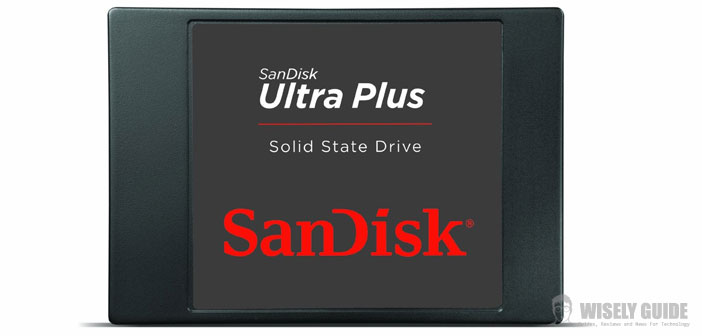Good performance at a competitive price, the Sandisk Ultra Plus 256 GB SSD recipe is similar to that already used in other sectors of the market. Always attentive to the delicate balance between price and performance Sandisk has earned an excellent reputation over the years, especially relative to storage devices such as Compact Flash and Secure Digital.
In recent years, thanks to the rapid spread of the disks SSDs on the market, the company has been dedicated to mass production of these products also going to face tough competition.
The new product that comes on the market as a whole is unique. The controller used is a Marvell 9175, successor to the 9174 model that equips many successful models such as the Plextor M3 or the Intel 510. The differences are minimal and mainly related to a better power management.
The disk has an internal layout very particular, using a Pcb of reduced size, that does not fill for more than a third the plastic box that encloses it. The modules are only four Nand and models are produced with 19 nm technology Mlc to 2 bits, and is consequently faster than those 3 bits that begin to spread on the market.
The controller uses a mode called nCache and managed via firmware, which uses only partially succeeded in obtaining the cells (according to the manufacturer) performance similar to the SLC.
In practice, the small files are written in nCache (managed via the DDR memory on the disk) failed to obtain very high performance, while the controller is responsible for transferring memory cells when the disk is not used or are used in other portions (unlike the classical technology that writes from cache to disk only when in idle).
Sandisk Ultra Plus 256 GB SSD – Features
This memory important for the product, consists of a chip Samsung DDR2 800 Mhz to 128 Mbytes. They may seem insignificant, but remember that this technology is only used for small files, since due to the inner workings of SSDs are the only ones to be affected by the differences between SLC and MLC. When writing large files to the time required to clear a group of cells goes into the background compared to the overall transfer time.
Sandisk Ultra Plus 256 GB SSD – Performance
In theory, the product offers performance somewhere between the mid and high bands. The sequential reading stood at the level of the best, claiming 530 MB / s and getting the test even something more. In writing we do not reach those peaks but in the face of a declared data of 450 MB / s the product actually offers a very similar value.
The performances obtained are therefore in line with what one would expect from a device of the type; Sysmark in 2012, the values are very high, as in the other tests performed in our laboratories. In the casual context, in particular, the manufacturer declares only the data write IOPS, with 39,000 IOPS that we are not yet able to reach. Anyway good results, especially occurring as physiological decline using a queue of 3 commands instead of 32 is really small.
The market price finally seen the results provided, it is really excellent and provides an opportunity ahead for a wide variety of users. For owners of notebooks, maybe with just a connection Sata 2 can represent a big step forward in terms of fast acceleration. Today as never before 256 Gbyte were so accessible to everyone.
Conclusions
PROS : Good performance, Attractive price.
CONS : Cheap materials for the shell.
- Overall


